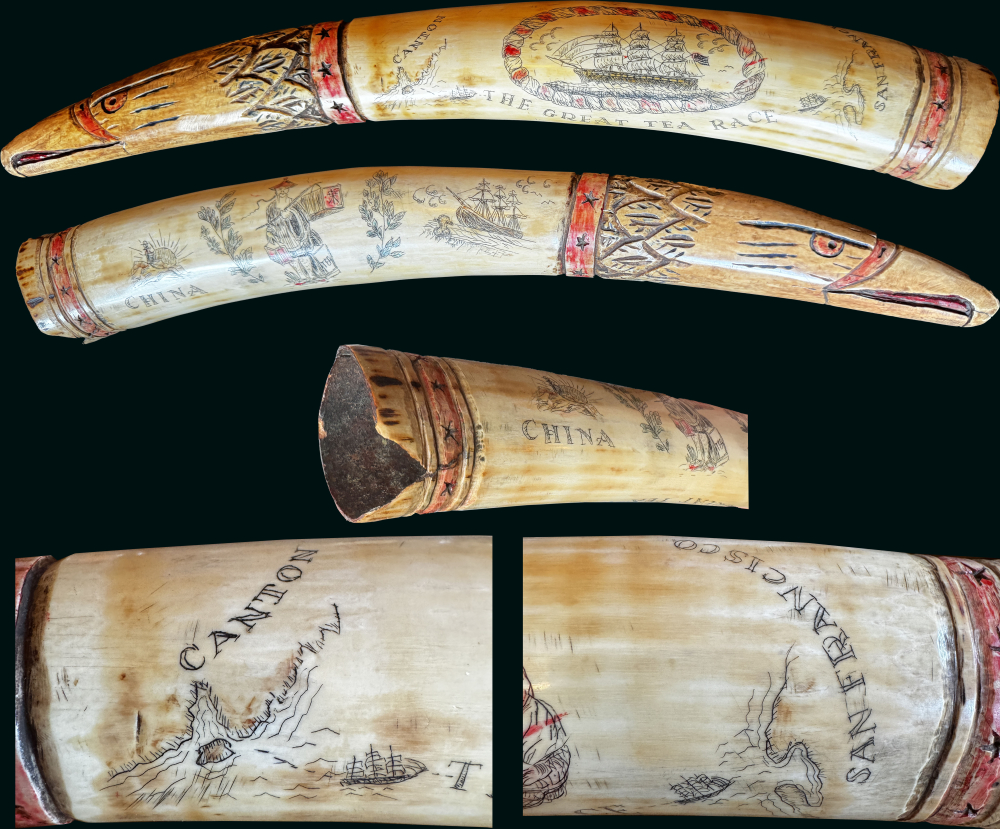This item has been sold, but you can get on the Waitlist to be notified if another example becomes available.
1851 Scrimshaw Walrus Tusk 'Great Tea Race' Canton to San Francisco
GreatTeaRace-unknown-1851$1,050.00

Title
The Great Tea Race. Canton - San Francisco.
1851 (undated) 2.25 x 17 in (5.715 x 43.18 cm)
1851 (undated) 2.25 x 17 in (5.715 x 43.18 cm)
Description
A rare c. 1851 sailer-made scrimshawed walrus tusk celebrating the China Trade and the era of Clipper Ships. The present map focuses on a voyage between Canton (Guangzhou) and San Francisco, possibly the record-breaking 1850 voyage of the clipper ship Stag Hound.
A Closer Look
The image is cut into a walrus tusk with an eagle carved at the tip. Patriotic red bands of stars frame a map. At the left is Canton (Guangzhou), the Pearl River Estuary, and an island (Hong Kong or Macau?) at its mouth. It shows a ship sailing east. At the right is San Francisco, with the Bay recognizable. An illustration of a clipper ship with an American flag appears at the center in a rope frame. The opposite side features additional carvings, including a view of China, tea leaves, a tea merchant, and another view of a clipper ship with furled sails.Great Tea Race
The title scrimshawed onto the work can be somewhat misleading. The 'Great Tea Race' most commonly refers to the Great Tea Race of 1866, a race between the clippers Ariel and Taeping from China to London. However, the term also more broadly applies to the informal contests between many clipper ship captains between Canton, and later Hong Kong, and various international ports - among them San Francisco. In this case, the piece may be making a specific reference to the achievement of Captain Josiah Richardson of the Stag Hound, who made an 1850 voyage between San Francisco and Canton in record time.Scrimshaw
In the 19th century, sailors - particularly those on long voyages - passed idle hours by creating scrimshaw, intricate engravings carved into walrus tusks and other ivory. These carvings typically depicted maritime scenes, ships, whaling adventures, or sentimental motifs such as portraits and patriotic emblems. The designs were etched into the smooth ivory surface with small knives or needles, then rubbed with soot, ink, or tobacco juice to make the images stand out. Walrus tusk scrimshaw was especially prized for its large, curved surface, allowing for detailed panoramic compositions. While primarily a pastime, scrimshaw became an important form of folk art, reflecting both the personal experiences of the sailor and the broader maritime culture of the 19th century.Condition
Excellent.

